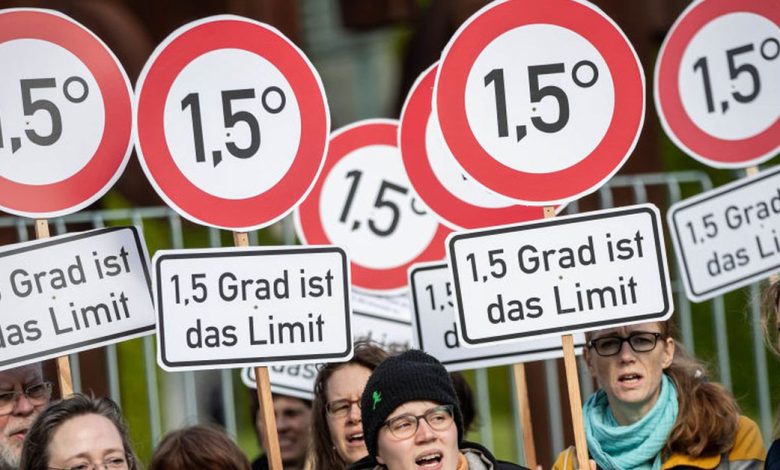UPSC Editorial Analysis
The critical issue of 1.5 degree celsius target
(Syllabus- GS Paper 3,Environment and ecology)

Context- The recent data released by the reports titled “State of global climate 2022” and “Global annual to decadal Update 2023- 27 by the World Meteorological Organization (WMO) highlight critical issues.
The findings of the report:
- The WMO’s decadal predictions said that the mean global temperature shall be around 1.1 to 1.8 degree celsius between 2023-27 that is higher than the 1850-1900 baseline temperature or pre-industrial levels.
- The temperature in the year 2022 was 1.15 degree celsius above baseline that shall exceed the to 1.5 degree celsius by 2027.
About the 1.5 degree target
- The 1.5 degree refers to the global target that aims to limit temperature rise by 2100 in order to prevent climate related crises.
- The 2 degree level was an acceptable level of warming for decades because it is unacceptable for the small island countries.
- The Copenhagen COP 15 of 2009 made the countries agree on limiting the global average temperature not above 2 degree celsius. However, in the 2015 Paris Agreement the countries agreed to limit the global average temperature to below 2 degrees preferably with an aim of 1.5 degrees above pre industrial levels.
- The global target was endorsed in the 2018 IPCC Intergovernmental panel on Climate change
Why 1.5 degree celsius is a critical target
- The IPCC in 2018 released a report on the impact of global warming if temperature rise reaches 1.5 degree celsius above the baseline.
- Droughts, heavy precipitation, frequent and intense heat waves,10 centimeter rise in sea level, destruction of the ecosystem were some of the irreversible changes that were predicted on a 2 degree rise in temperature level.
- The finding also highlighted polar amplification with greater impact of global warming than the global average at the Arctic.
The impact of climate change
- There exist various impacts of climate apart from environmental changes like exacerbating food insecurity, displacement and deaths.
- The climate risks and hazards have a direct impact on the human population depending on exposure, adaptive capacity and vulnerability.
- The real impact in recent years have been seen with rise in diseasea and low agricultural yield due to climate changes.
- The impact of climate change shall be worse for countries like Nigeria, Ethiopia, South Sudan,Somalia, Yemen and Afghanistan which are already suffering from malnutrition,hunger and acute food shortages.
- The region of the Horn of Africa including countries of Ethiopia ,Kenya and Somalia since 2020 have been suffering from extreme drought conditions while the western Africa suffers from floods and heavy rainfall pushing millions into acute food insecurity.
- Such food and climate rise have led to mass scale migrations and displacements in Syria and Yemen.
- The terrestrial and aquatic ecosystems are also under the threat of large scale extinctions with several species of plants and animals under the vulnerable and threatened category due to climate change.
- In the Sub-Saharan regions of Africa the population of several migratory species has declined. The bleaching of large masses of coral reefs has been on a rise with ocean acidification due temperature size and climate change.
The impact on India
- India has been suffering from the brunt of climate change with the year 2022 seeing decline in crop yields.
- The year 2023 has had the hottest February in the record since 1901 and in 2022 India has seen extreme weather events 80% of the year. Frequent and extreme heat waves, wildfires, food shortages and delayed monsoons are some of the serious impacts on India due to climate change.
What India has been doing so far
- India has been aware of the critical issues of climate change for which it has taken several steps for its mitigation.
- According to the Climate Change Performance Index 2023, India ranks 8th globally leaving behind Denmark, Sweden, Chile and Morocco.
- With its economic needs being a developing and emerging economy India has balanced growth with sustainability .
- Measures like green hydrogen missions, Panchamrit, International solar Alliance, and many other critical measures India has played the role of a critical climate player performing well enough at the domestic and international levels.





.png)



